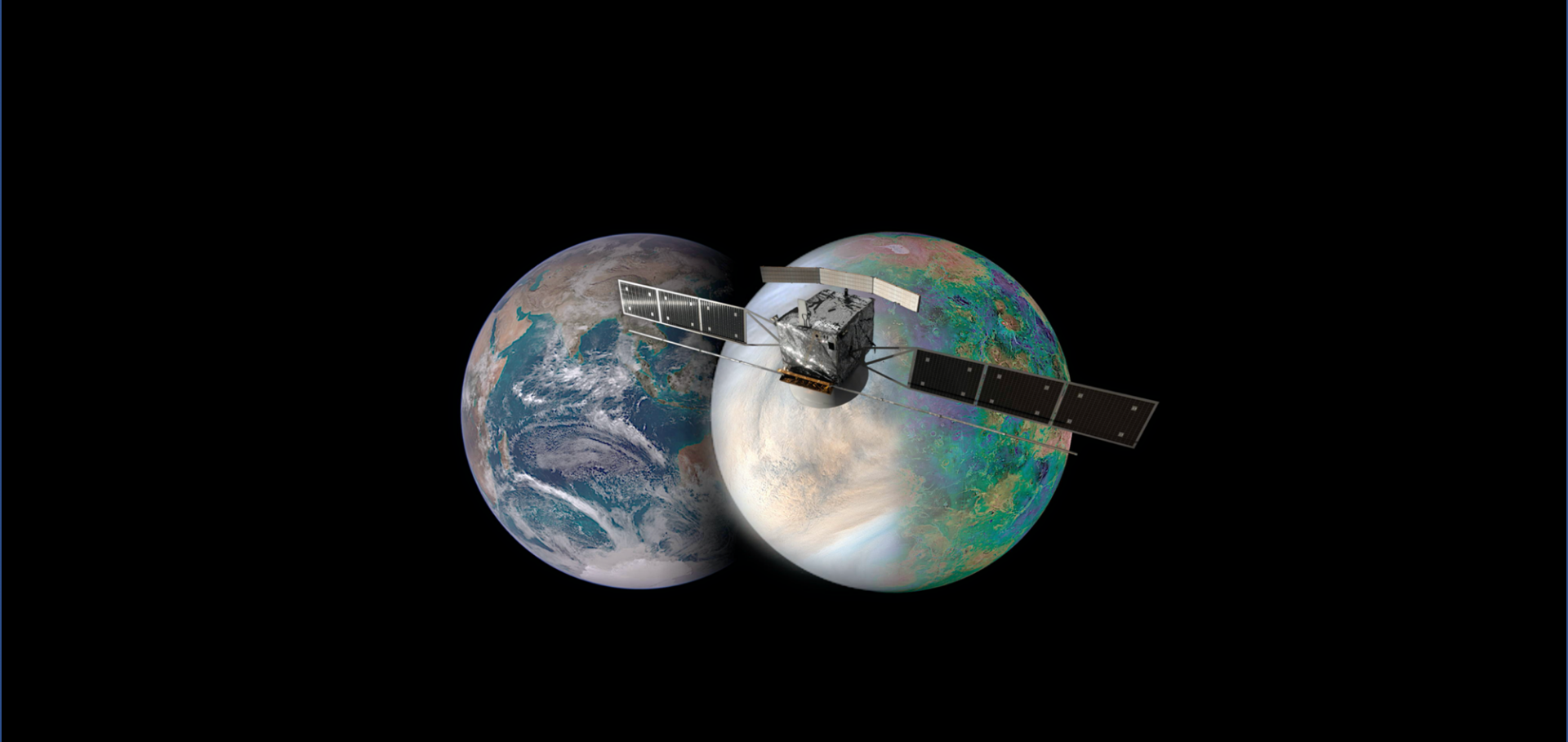EnVision: Taking the pulse of our twin planet
Experimental Astronomy 33:2-3 (2012) 337-363
Abstract:
EnVision is an ambitious but low-risk response to ESA's call for a medium-size mission opportunity for a launch in 2022. Venus is the planet most similar to Earth in mass, bulk properties and orbital distance, but has evolved to become extremely hostile to life. EnVision's 5-year mission objectives are to determine the nature of and rate of change caused by geological and atmospheric processes, to distinguish between competing theories about its evolution and to help predict the habitability of extrasolar planets. Three instrument suites will address specific surface, atmosphere and ionosphere science goals. The Surface Science Suite consists of a 2.2 m2 radar antenna with Interferometer, Radiometer and Altimeter operating modes, supported by a complementary IR surface emissivity mapper and an advanced accelerometer for orbit control and gravity mapping. This suite will determine topographic changes caused by volcanic, tectonic and atmospheric processes at rates as low as 1 mm a-1. The Atmosphere Science Suite consists of a Doppler LIDAR for cloud top altitude, wind speed and mesospheric structure mapping, complemented by IR and UV spectrometers and a spectrophotopolarimeter, all designed to map the dynamic features and compositions of the clouds and middle atmosphere to identify the effects of volcanic and solar processes. The Ionosphere Science Suite uses a double Langmiur probe and vector magnetometer to understand the behaviour and long-term evolution of the ionosphere and induced magnetosphere. The suite also includes an interplanetary particle analyser to determine the delivery rate of water and other components to the atmosphere. © 2011 Springer Science+Business Media B.V.A balloon-borne mission to observe Venus during the January 2014 inferior conjunction
European Space Agency, (Special Publication) ESA SP 700 SP (2011) 379-386
Abstract:
We describe a stratospheric balloon mission that will make continuous observations of Venus over a period of several weeks during the January 2014 inferior conjunction. NASA's balloon program has historically supported Antarctic flights like this one in the eliophysics and Astrophysics Divisions. The proposed experiment consists of a one meter telescope, two imaging detectors operating from 0.35 to 2.55 ! m at the diffraction limit and 33 filters. This mission will address a number of questions regarding (a) Venus' super-rotation and general circulation, (b) the properties of Venus' clouds, (c) the distribution of trace species and the coupling between certain dynamical and chemical processes, (d) the existence and prevalence of lightning on Venus, and (e) the distribution of thermal emissivity anomalies on Venus' surface. We call this mission VSS (Venus StratoScope) to keep in mind the legacy of the Stratoscope and Stratoscope II balloon missions.Venus's southern polar vortex reveals precessing circulation
Science 332:6029 (2011) 577-580
Abstract:
Initial images of Venus's south pole by the Venus Express mission have shown the presence of a bright, highly variable vortex, similar to that at the planet's north pole. Using high-resolution infrared measurements of polar winds from the Venus Express Visible and Infrared Thermal Imaging Spectrometer (VIRTIS) instrument, we show the vortex to have a constantly varying internal structure, with a center of rotation displaced from the geographic south pole by ∼3 degrees of latitude and that drifts around the pole with a period of 5 to 10 Earth days. This is indicative of a nonsymmetric and varying precession of the polar atmospheric circulation with respect to the planetary axis.Venus's Southern Polar Vortex Reveals Precessing Circulation
Science (2011) 1-3
Venus Cloud Properties from Venus Express VIRTIS Observations
AAS/Division for Planetary Sciences Meeting Abstracts #42 42 (2010) 994-994


